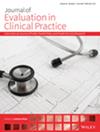Factors Affecting Family Physicians' Use of Clinical Practice Guidelines
Abstract
Background
Clinical practice guidelines (CPGs) are widely used globally, yet their utilisation by family physicians varies between countries. Despite the known benefits of CPGs, limited data exist regarding their use among family physicians in Turkey.
Aim
The aim of this study is to determine the CPG usage status and influencing factors of family physicians in primary care settings.
Methods
A questionnaire with Likert-scale response options was administered to 384 family physicians working in Family Health Centres affiliated with the Ministry of Health. The survey gathered demographic data and assessed physicians' awareness, knowledge, and behaviours regarding CPGs use. Chi-square tests and descriptive statistics were used in the analysis, with a significance level set at p < 0.05.
Findings
Of the 384 physicians, 196 (51%) were male, with a mean age of 44.5 years (SD: 9.7), and 257 (66.9%) were general practitioners. A total of 297 physicians (77.3%) had previously used CPGs, with usage significantly higher among resident physicians (96.5%; p < 0.001). The most used guidelines were for hypertension (88.2%), diabetes (87.2%), and thyroid diseases (54.2%). Regarding opinions on CPGs, 77.1% of participants agreed that guidelines improve treatment effectiveness and reduce healthcare costs, while 73.9% indicated they would use guidelines more often if they had sufficient time. However, 69.7% disagreed with that guidelines limit their autonomy as physicians. The main barriers to guidelines used included time constraints and the overwhelming number of guidelines available.
Conclusion
Family physicians widely use CPGs, yet workload and accessibility remain significant barriers. Policies to improve access and streamline guideline use in practice are warranted.

 求助内容:
求助内容: 应助结果提醒方式:
应助结果提醒方式:


